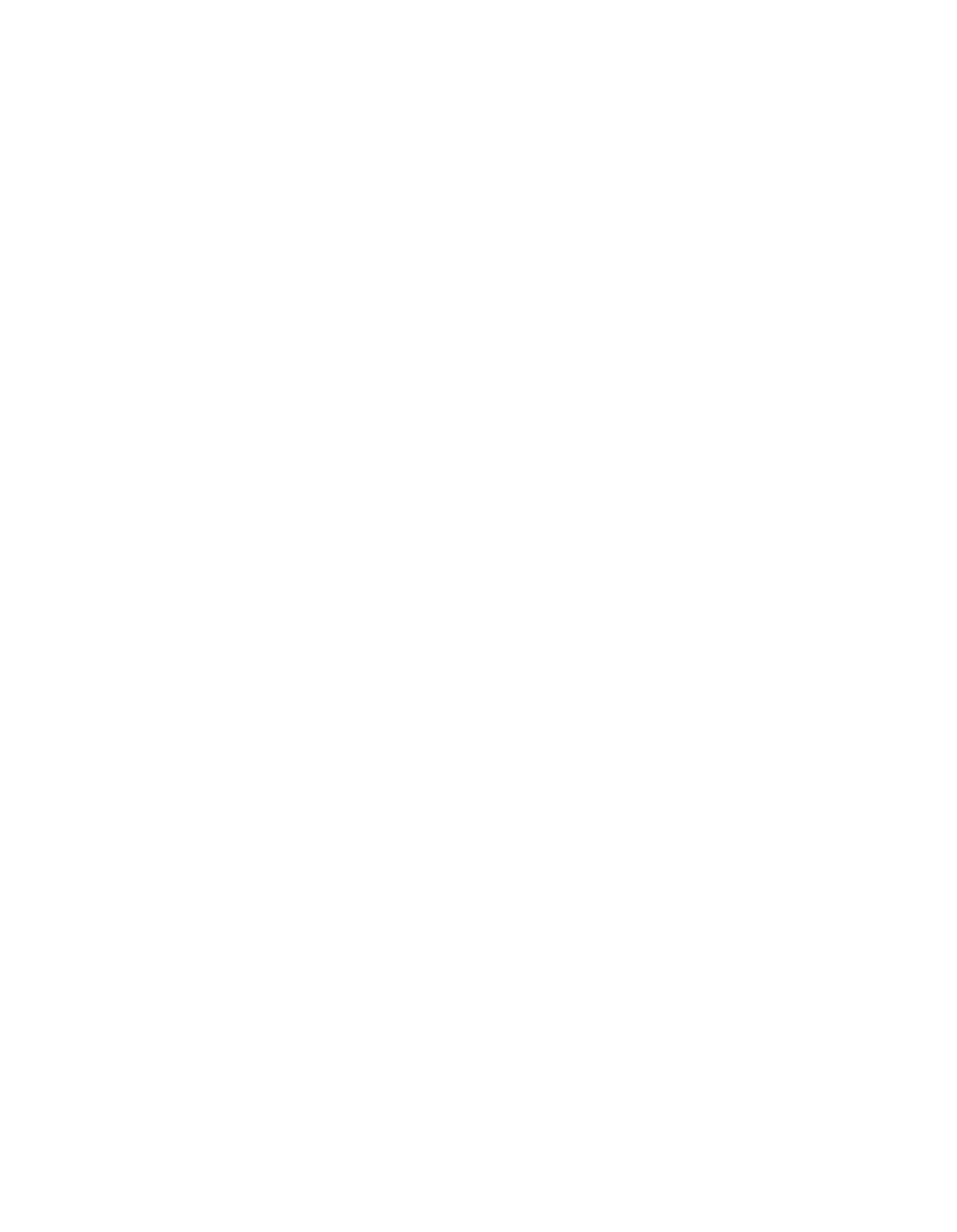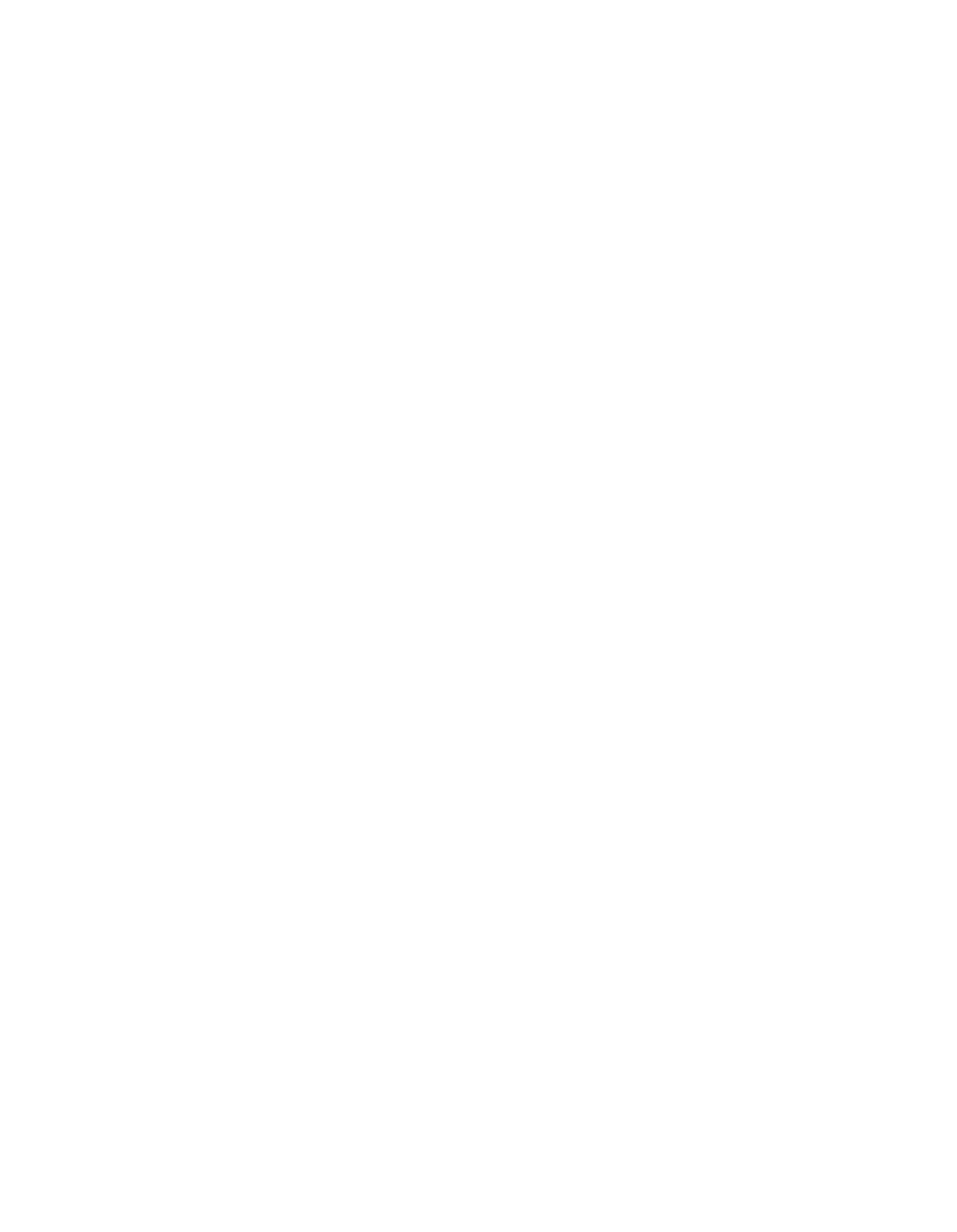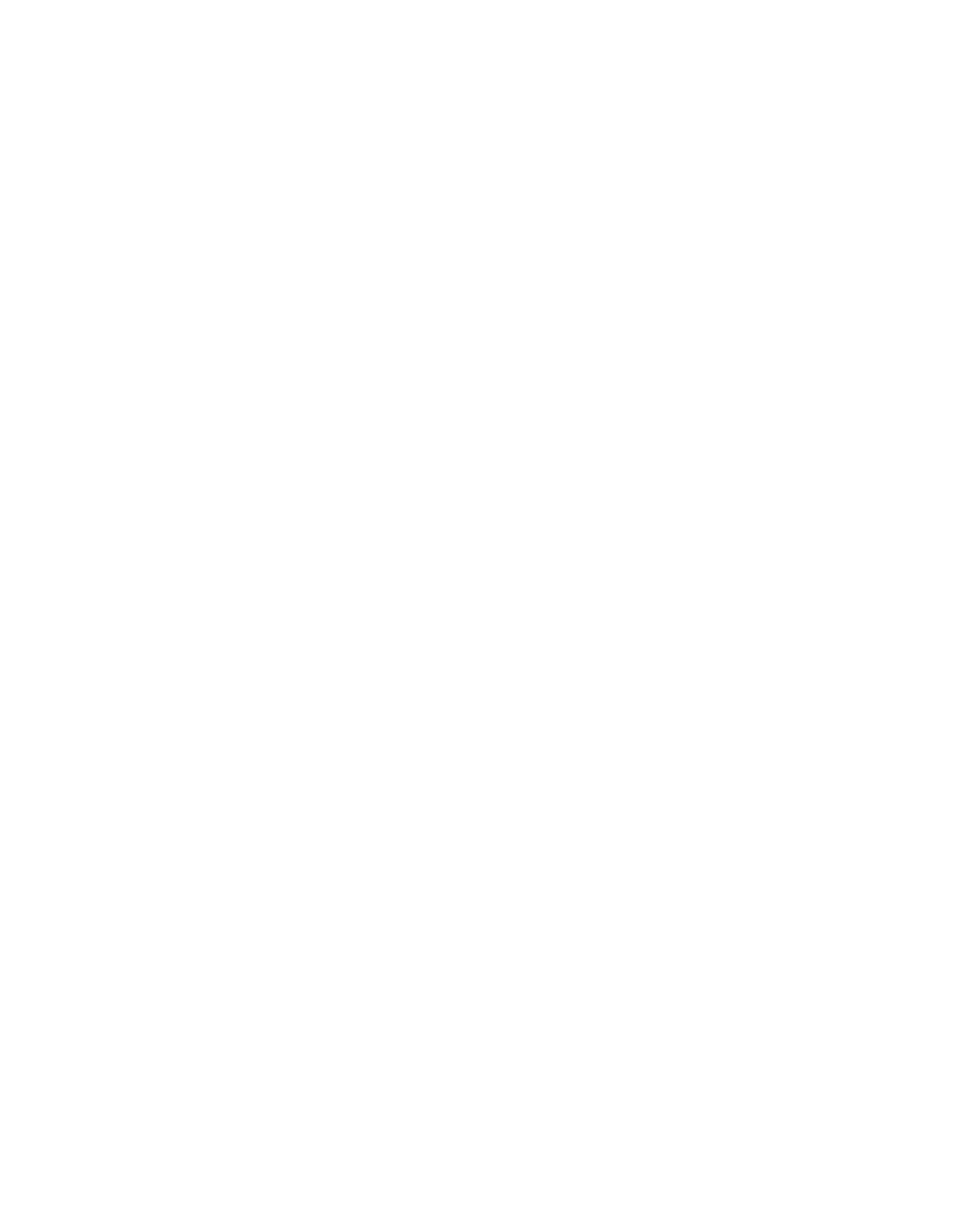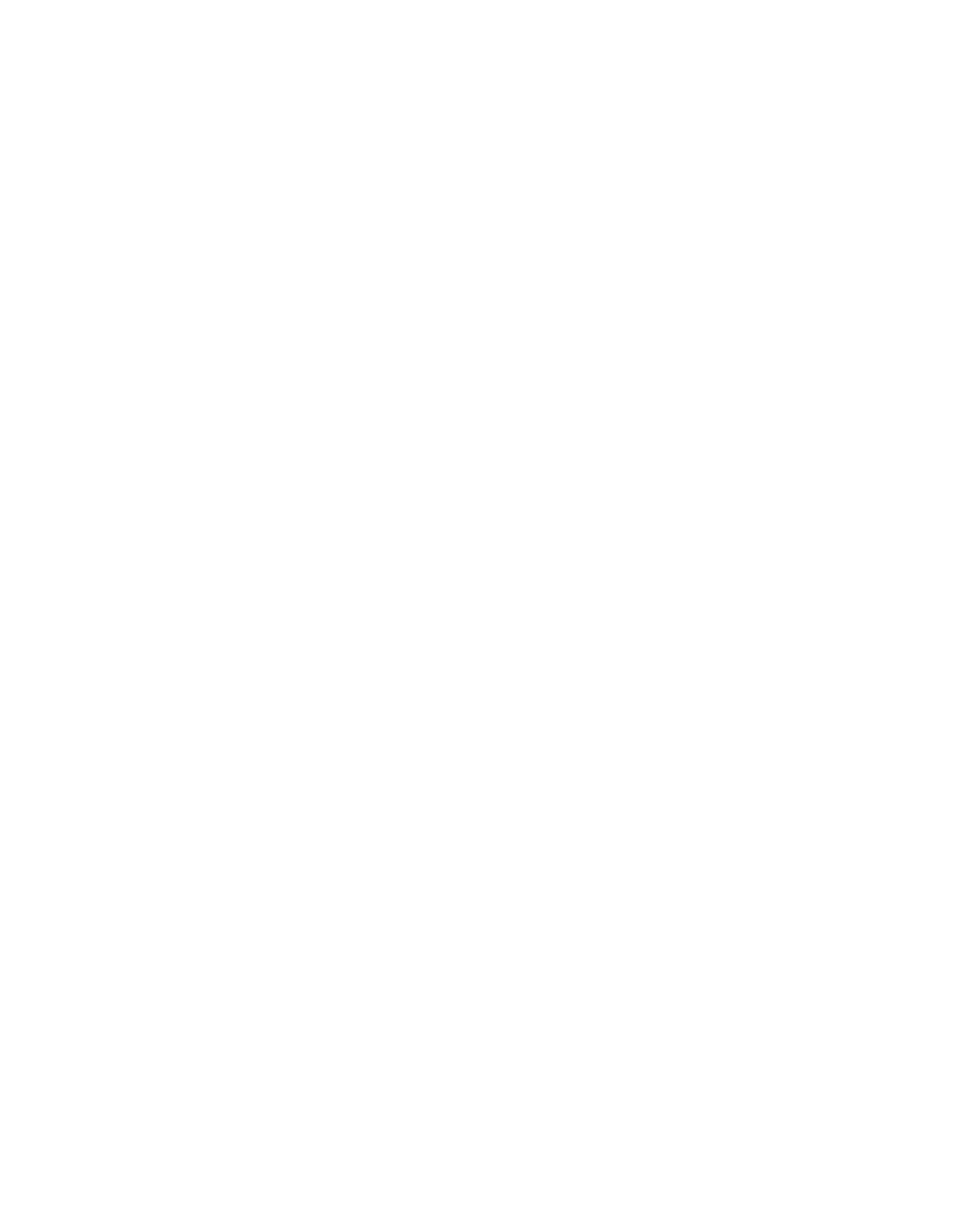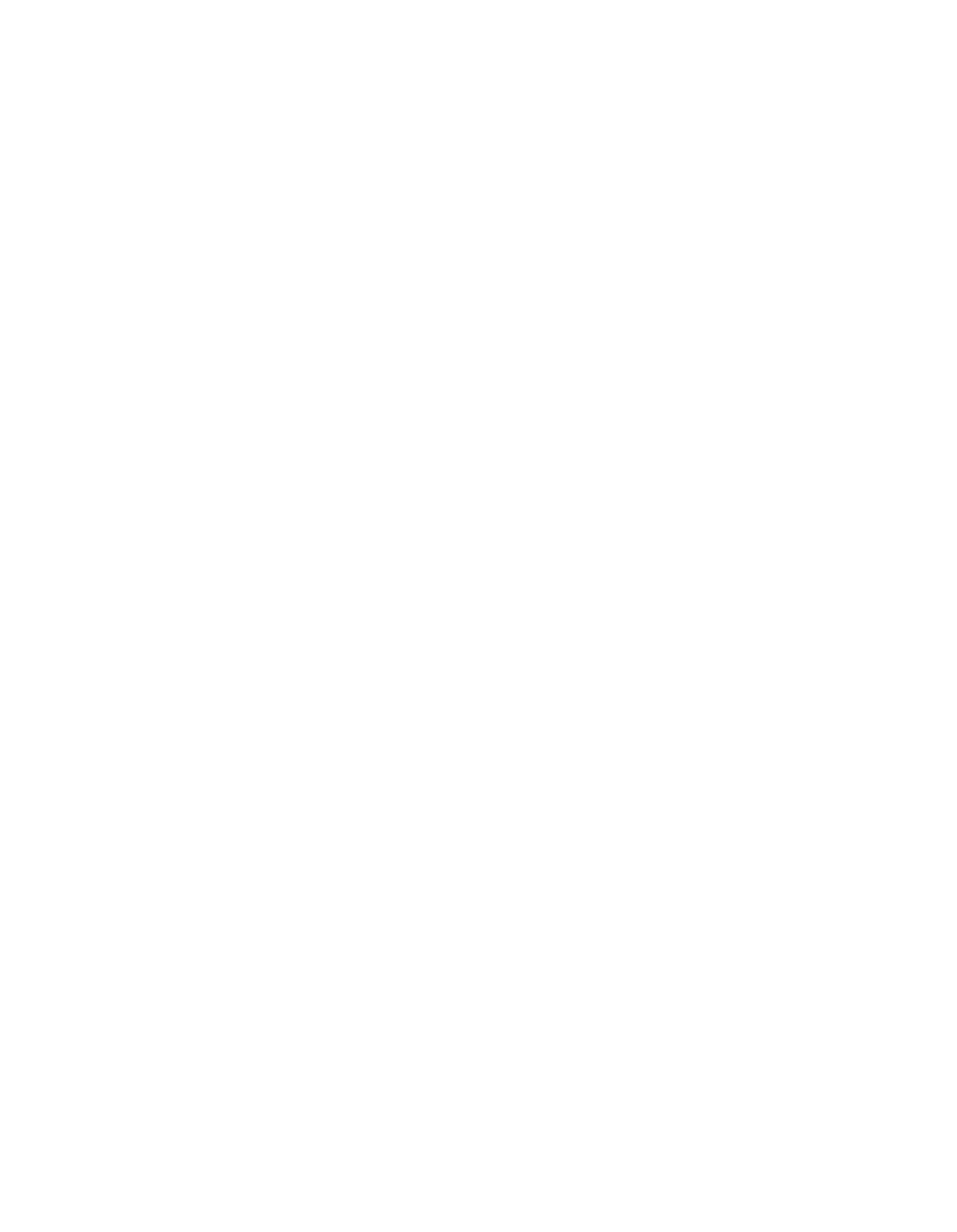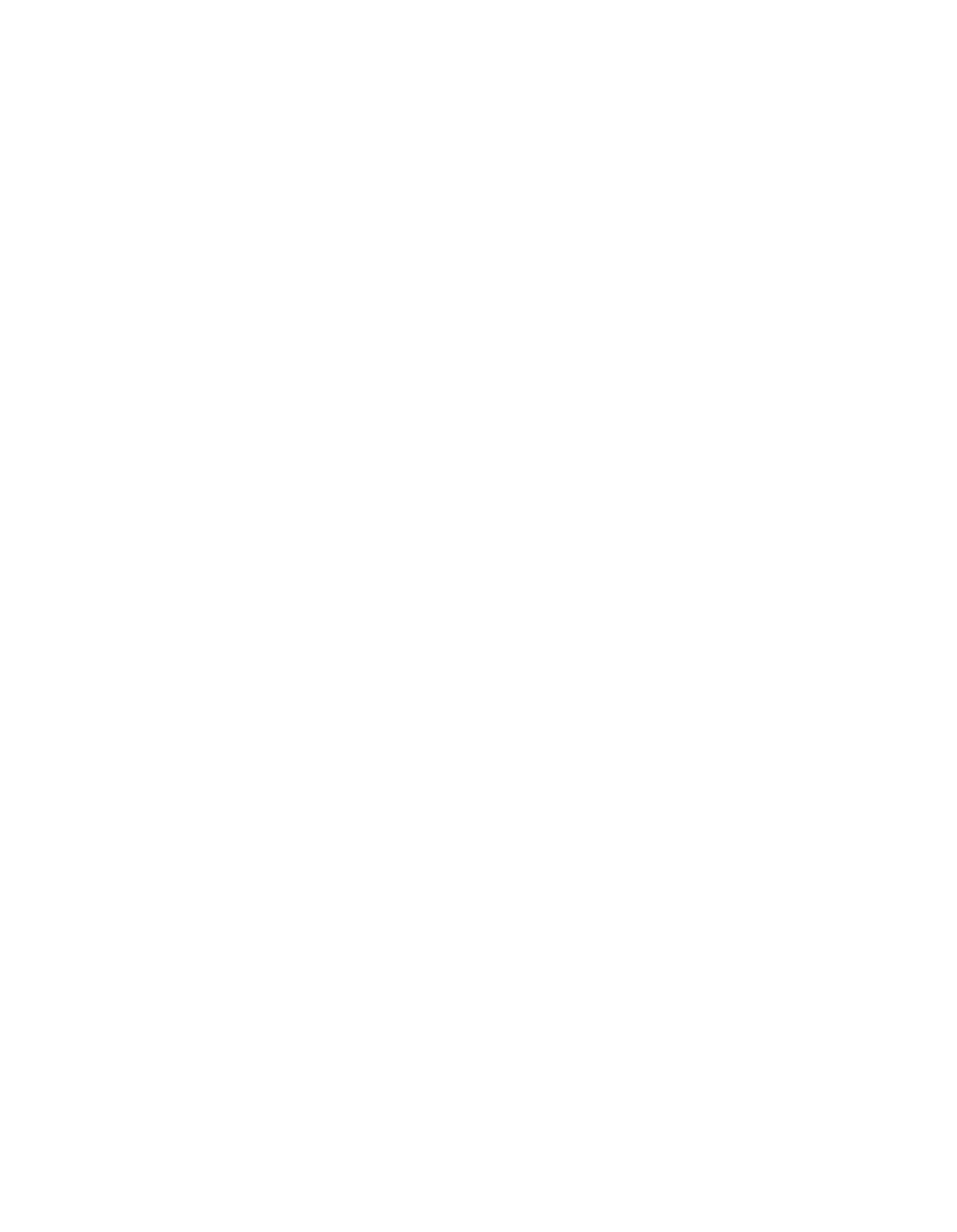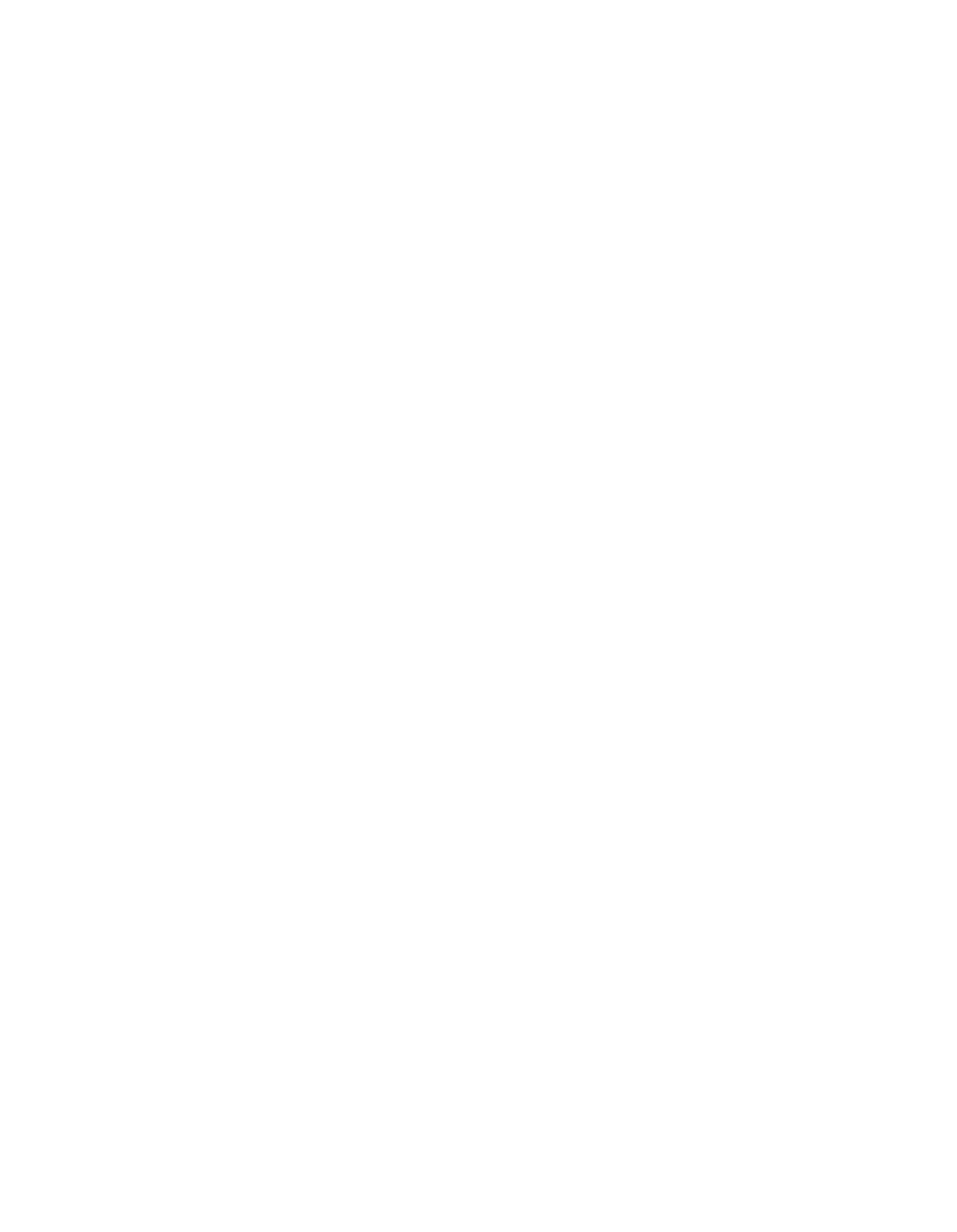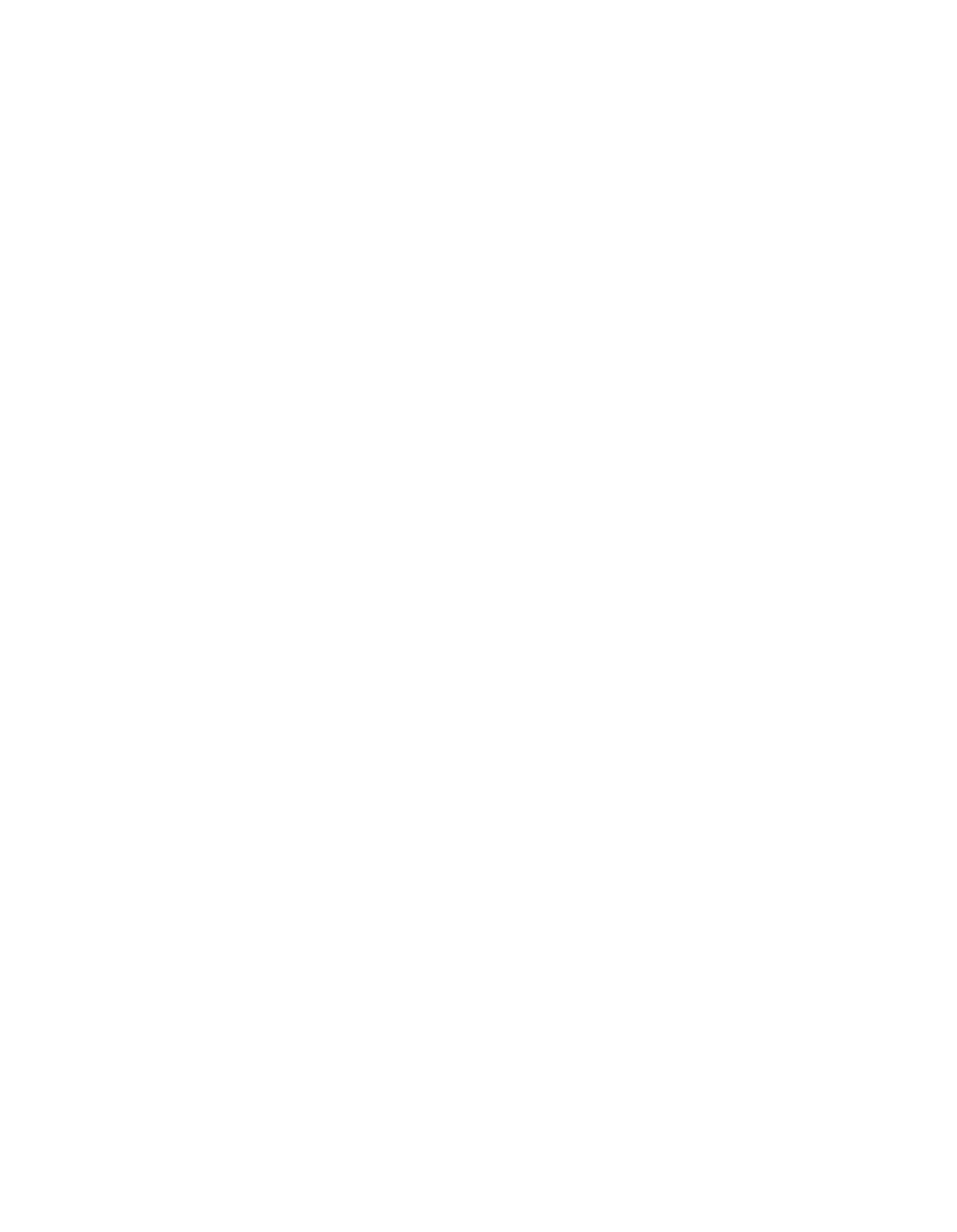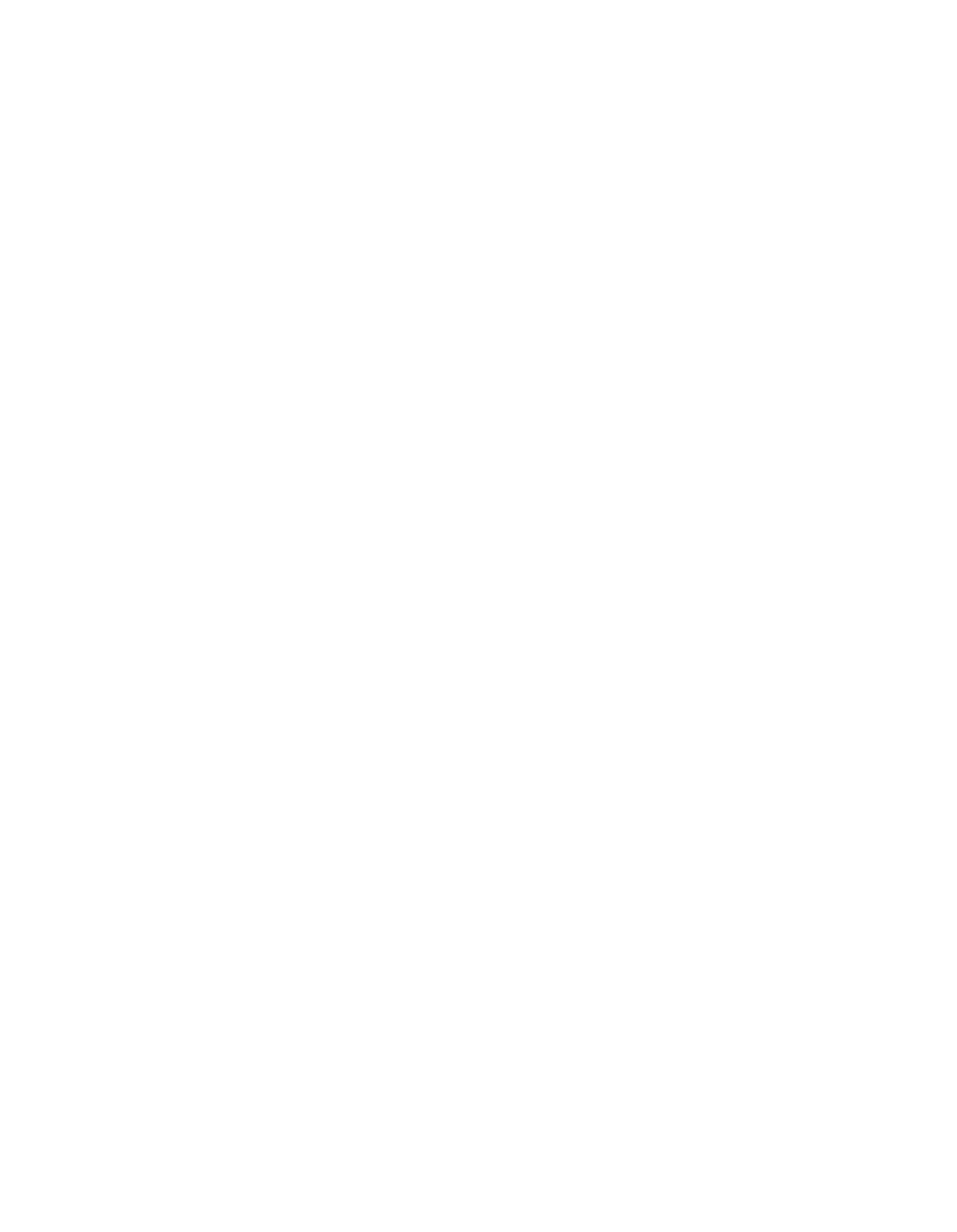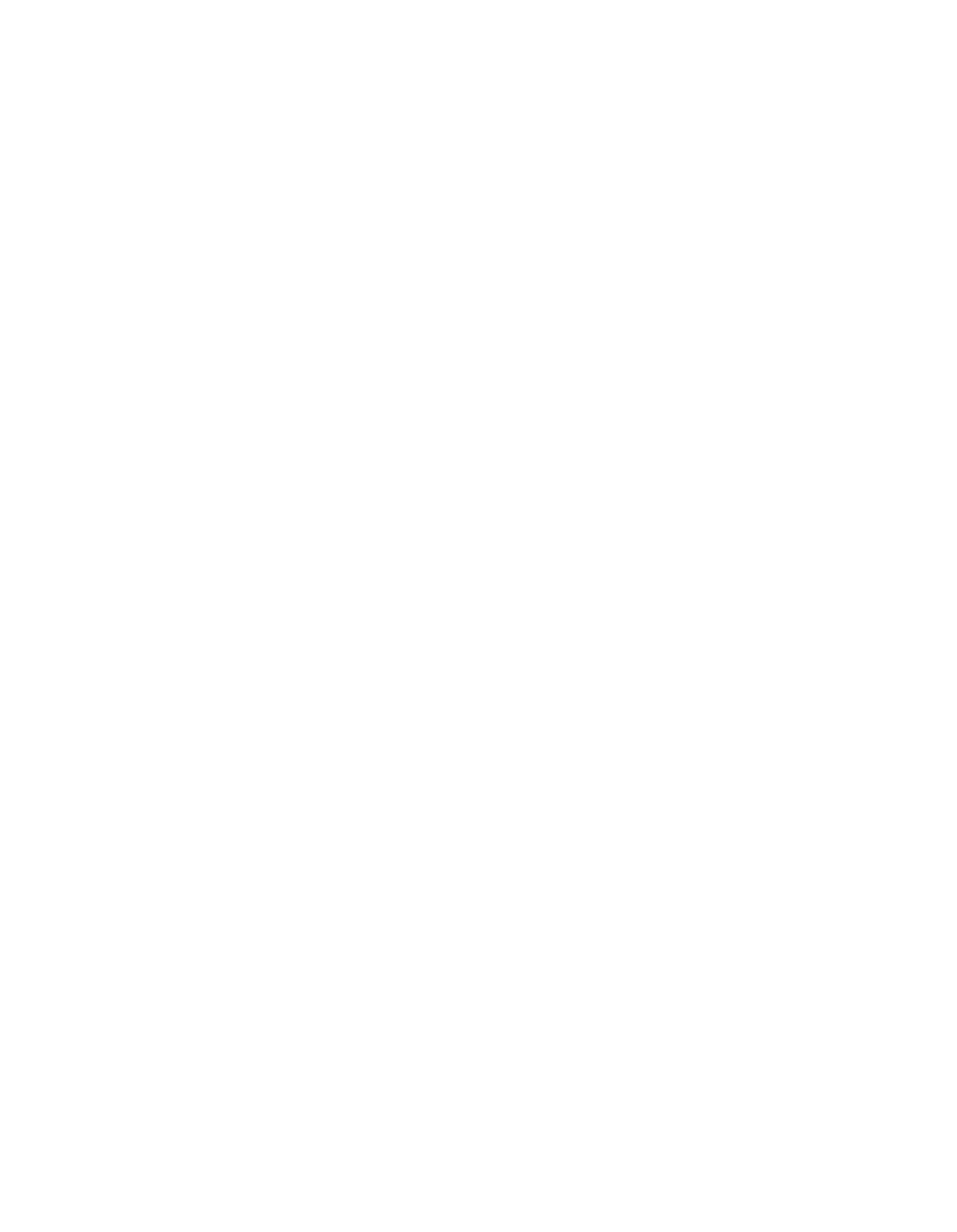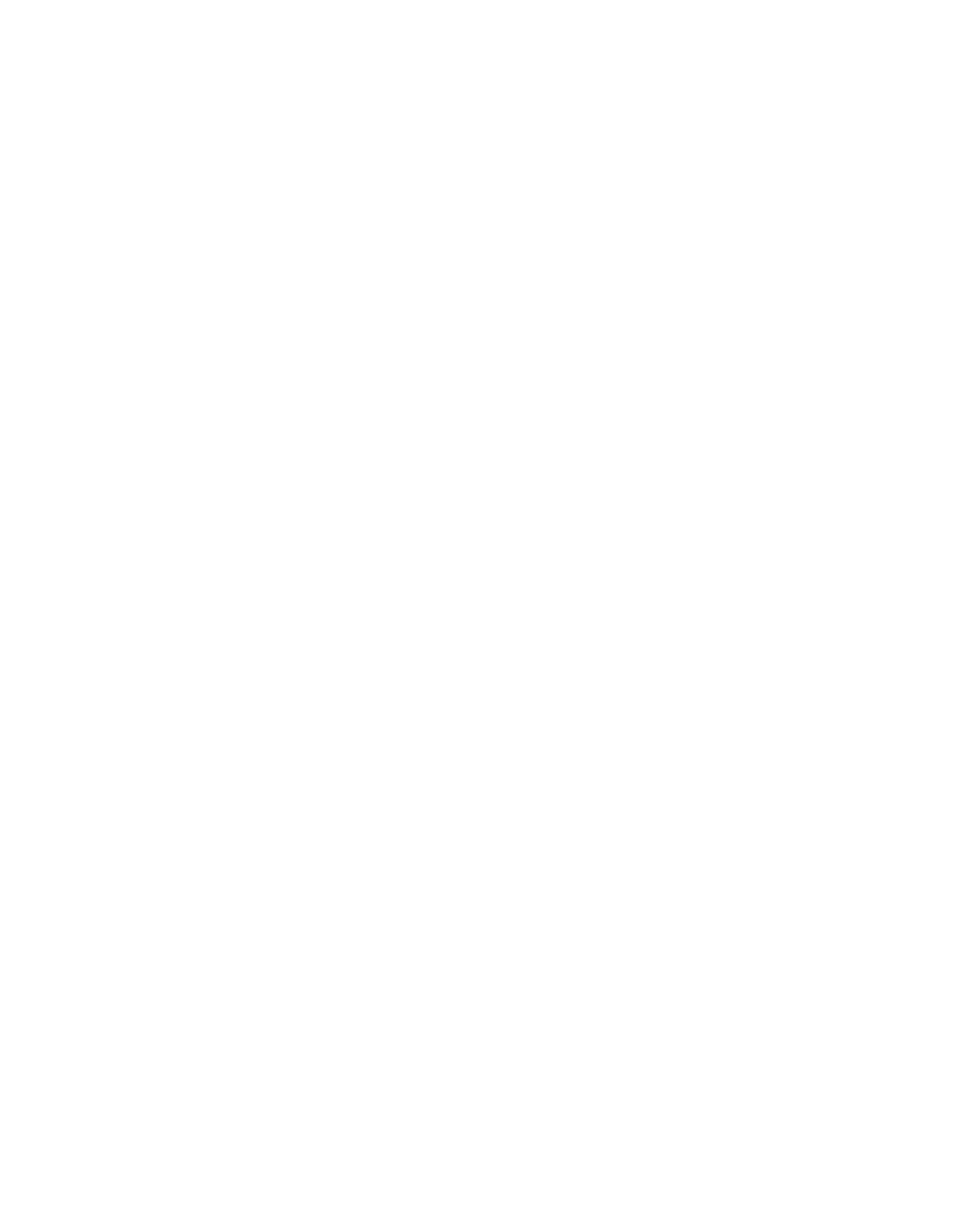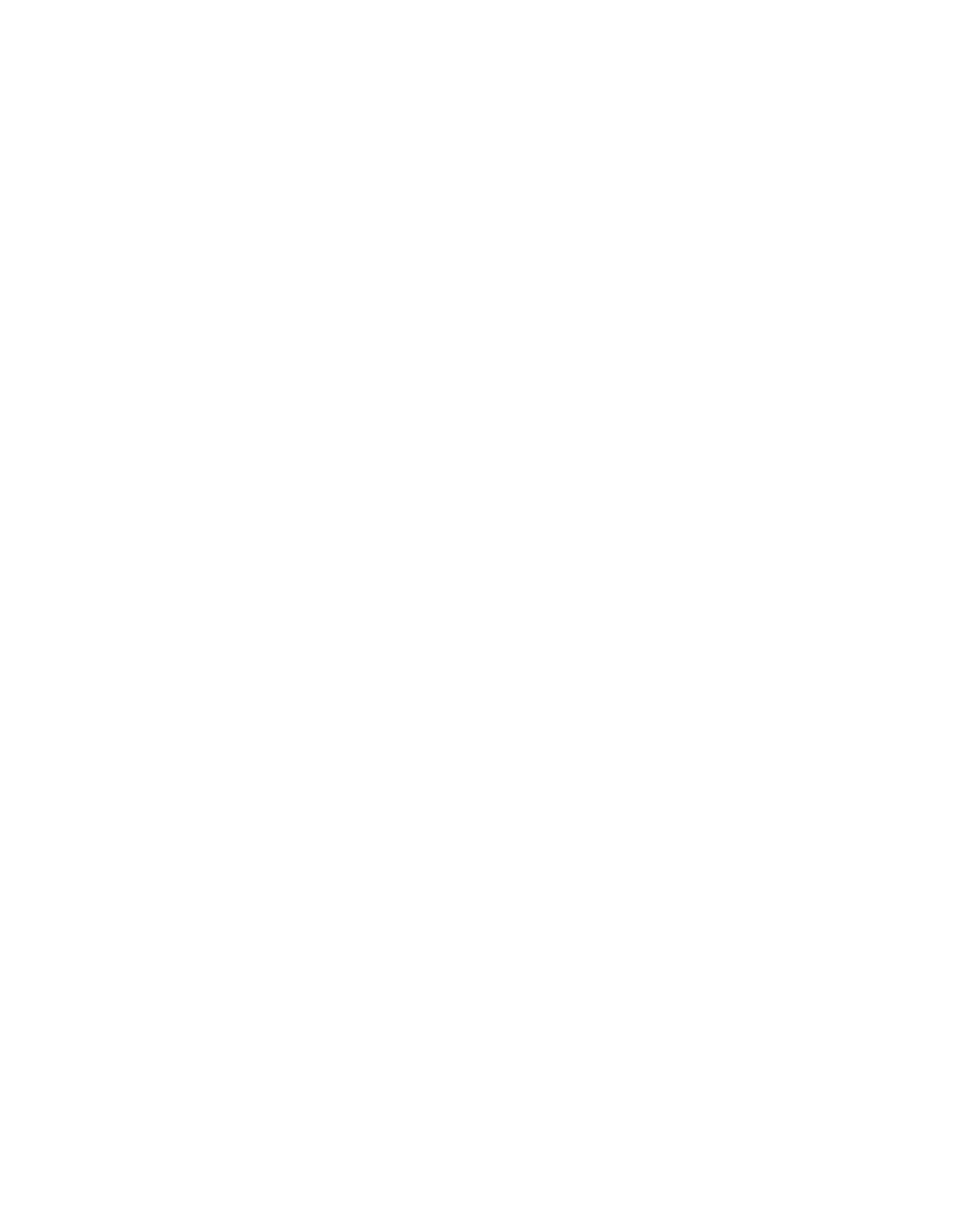ILLINOIS POLLUTION CONTROL BOARD
November 29, 1990
~
I1~
MATTER
OF:
~AfI
DRINKING
WATER ACT
)
R90-21
(H~R~
CliONS
)
(Rulemaking)
I UAI
ORDER. ADOPTED RULES.
~Nl(N
AND ORDER OF THE BOARD (by J. Anderson):
(i~
August 9, 1990, the Board entered a final Opinion and Order in R88-26,
w?ii~i
involved adoption of regulations in 35 Ill. Adm. Code
611
which are
in substance to USEPA regulations implementing the Safe Drinking
Wnt~Act (SDWA). On September 13, 1990, the Board proposed to make needed
‘l~’!C
Lions to the regulations adopted in R88-26. Following public comment,
Ui’
bu~rd is now adopting the proposed amendments.
Section 17.5 of the Act provides for quick adoption of ~-egulationswhich
~i
‘identical in substance” to federal regulations; Section 17.5 provides
tIi~
litle VII of the Act and Section 5 of the Illinois Administrative
P~iHt~dureAct (APA) shall not apply. Because this rulemaking is not subject
t~
SNt’.or
5 of the APA, it is not subject to first notice or to second notice
‘~v~~w
by
the Joint Committee on Administrative Rules (JCAR).
.lhe SDWA program was drawn from 40 CFR 141, 142 and 143 (1989).
PUBLI C COMMENT
lh
Board is
aware of two areas in the R88—26 Order which require
(0’e( LIar.
First, on AuQust 6, 1990, the Environmental Protection Agency
:AU~y) liled a supplemental post-adoption comment, which included the text
uf
Ihi’
materials it asked to be incorporated by reference in its ,Juiy 20,
‘JU, comment.
(PC 14 ir R88—26) The August 6 comment did not arrive in time
I~1” reviewed in advance of the August 9 meeting. it is now necessary to
Kr the
titles of the incorporations by reference to conform with the
iutu~iI
titles in the documents.
St’cond, on September 2, 1990, the Board received a request from Access
~ Iy~ cai Systems, Inc. (Access) for inclusion of the “MMD—MUG” or “Col i lert”
tfhod~. for bacterial analysis. As was discussed on page 47 of the August 9,
~
Opinion in R88—26, these were omitted since 40 CFR 141.21(f) references
~“~y
journal articles which do not actually set forth the methods. Access h~
~rt~v~ded supplemental materials which actually describe the methods.
11w Board will make the August 6, 1990, Agency comment in ROh—26 PC ?
in
hi’
Docket, and the September 2, 1990, Access comment PC 1.
Al so, 01’
St’p~ember 22 , 1990, the Board recei ved a letter from the Agency “eque~
1
1n~
lu~ior of the MMO—NUG test.
(PC
3)
116—365
—2-
The proposed rules appeared on October 5, 1990, at 14 Ill. Reg. 16215.
The Board received the following public comment following the September 13,
1990, Proposed Opinion and Order and publication:
PC 4
Agency, October 8, 1990
PC 5
Agency, October 23, 1990
PC 6
Administrative Code Division, November 13, 1990
PC 7
JCAR, November 19, 1990
Neither the Code Division nor JCAR had any suggestions for change. The
Agency comments are discussed below.
PROCEDURAL HISTORY OF P88-26 and R90-4
The
SDWA
rules were recently adopted in Docket R88-26. The Board entered
a Proposed Opinion and Order on October 5, 1989. The proposal appeared on
December 1, 1989, at 13 Ill. Reg. 18690. Following the public comment period,
the Board adopted a “Final” Opinion and Order on May 24, 1990. The Board then
allowed a post—adoption comment period. On August 9, 1990, the Board withdrew
the May 24 Opinion and Order, and substituted a new Opinion and Order. The
final rules appeared in the Illinois Reqister On October 5, 1990, at 14 Ill.
Reg. 16517.
In P88-26 the Board adopted regulations to correspond with USEPA rules
adopted through June 30, 1989. The Board reserved Docket R90-4 to update the
rules through December 31, 1989. However, on June 21, 1990, the Board
dismissed R90-4, after determining that the USEPA amendments affected only
language which was not to be adopted in P88-26.
On September 27, 1990, in P90-13, the Board proposed to update the SDWA
rules to include USEPA amendments during the period January I through June 30,
1990. That proposal appeared on October 19, 1990, at 14 111. Reg 17154.
APA AND INCORPORATIONS BY REFERENCE
The rulemaking concerns mainly mainly “incorporations by reference”. IP
Part 611 these are mainly references to analytical methods published by a
variety of sources. The Illinois Administrative Procedure Act (APA), and
derived regulations, restrict the use of such references in rules. (Ill. Rev.
Stat. 1989, ch. 127, par. 1006.02) An Illinois agency may incorporate such
standards or guidelines into a rule without publishing the standard or
guideline in full if:
1. The standard is from a federal agency or a nationally recognized
organization.
2. The rule contains the address of the agency or organization for
purposes of ordering the standard.
3. The agency or organization which adopted the standard makes copies
116—3 66
-3—
readily available to the public.
~I. The rule includes the date of the standard.
5.
The
rule states that it does not include later editions or
amendments.
6. The agency maintains a copy of the standard in its files for public
inspection and copying.
Incorporations by reference have been
a major issue in several identical
in substance rulemakir.gs, including the
underground storage tank program
adopted in R88-27 (April 27, 1989; 13
Ill. Reg. 9519, effective June 12,
1989.
Section 7.2(a)(4) authorizes the Board to incorporate USEPA rules by
reference where
it is possible to do so without causing confusion to the
public. Section 7.2(a)(4) concerns “normal” incorporatior’s by reference, in
which toe Board references a USEPA rule rather than adopting the verbatim
text. “Normal” incorporations are usually placed at the appropriate point in
the verbatim text. Section 611.102 concerns “abnormal” incorporations by
reference. These mainly consist of technical documents which are referenced
in the body of the verbatim text. “Abnormal” incorporations also include
USEPA rules which are referenced in the verbatim text, but which are not a
part of the program the Board is supposed to adopt. For example, in the
drinking water rules, USEPA may cite to analytical standards for wastewater.
The APA requirements on incorporation by reference are “enforced” by way
of JCAR review of the documents during the first and second notice periods
pursuant to Section 5 of the APA. Because Section 17.5 of the Act provides
that Section 5 of the APA does not apply to identical in substance rulemaking,
the Board is not required to obtain JCAR prior approval of these documents.
However, Section 17.5 does not include a specific exemption from the APA
limitations on incorporation by reference.
There is a potential conflict between the requirements of the APA and the
identical in substance mandate if a USEPA rule cites to a document which the
APA prohibits. In such a situation the Board balances the requirements of the
APA and the Act. The Board considers: whether the reference is really
necessary to the identical in substance program; whether the APA violation
amounts to a due process question; and, whether there are alternative ways,
such as setting forth the substance of the standard in the rule.
MMO—MUG TEST
For clarity and back—referencing purposes, we are below first summarizing
the history of the difficulties with including the MNIO—MUG test.
40 CFR 141.21 (f)(3)(iv) allows the use of the
“MMO—MUG test” (“minlncil
medium ortho—nitrophenyl—beta—d—galactopyranoside
-
4-rnethyl-umbeiI1fery)~~
beta—d—glucuronide test”) or “Autoanalysis Colilert System” as o method tOP
total col iform analysis. The corresponding Board rule is 35 1 11. I~dm~
Ctuh~
611.526. USEPA cites to a series of journal articles
~or
tlit’se it’t~~
YH~
I 1
6—367
-4-
initial problem was that the APA authorizes incorporation by reference of
“standards
or guidelines”, but not journal articles. This was discussed in
the October
5,
1989, R88-26 Proposed Opinion on page 13.
The Board received no response to this issue raised in the Proposed
Opinion. (See PC 5 in R88-26, items 25 through 27) The Board therefore
undertook to find the journal articles and attempt to obtain permission from
the publisher. This led to several discoveries: First, the the journal is in
fact published by the American Society for Microbiology (ASM), rather than
AWWA as implied in the USEPA rule. Second, although the journal articles
discuss the “MMO—MUG” test, they do not tell a person how to perform the
test. Therefore, in the May 24, 1990, Opinion and Order, the Board dropped
this method from the rules. The discussion occurred on page 30, in which the
Board asked for clarification, as follows:
54 Fed. Peg. 29998, July 17, 1989, appears to be
the only USEPA action during the first update period
for these rules. (July 1 through December 31,
1989.) This adds to this reference additional journal
articles, which suffer the same flaws. The Board
requests clarification of the agencies’ position
during the final comment period. (P88—26 Opinion of
May 24, 1990, p. 30)
The Board received no response to this issue during the post-adoption
comment period. (See PC 14 in R88—26, p. 18
-
21, 47) On August 9, 1990, the
Board therefore adopted the rules without reference to the lIMO—MUG test.
(R88-26 Opinion of August
9, 1990, p. 47)
On June 21, 1990, the Board dismissed P90-4 (SDWA Update for July 1
through December 31, 1989) after determining that the journal articles would
not appear in the Board rules in the first place. The Board received no
comment on
P90-4.
Following the final adoption of P88—26, the Board was contacted by
Access. The lIMO—MUG test is a proprietary method in which Access sells tubes
containing the a culture
medium and the “Colilert reagent”. Coliform bacteria
metabolize the ortho-nitrophenyl-beta-d-galactopyranoside, freeing o-nitro-
phenol, which is detected through color change.
As noted above, the journal articles cited by USEPA discuss the MMO—MUG
test, but do not describe it. Rather, they
start with the assumption that the
reader is already familiar with the test itself. Access has provided the
Board with a number of documents describing the test. One of these is an
article describing the test, entitled “Rapid specific environmental coliform
monitoring”, by S. Stratman, American Laboratory, July, 1988. However, this
is still a journal article. The better reference appears to be the
instruction sheet which Access provides with the culture medium and reagent.
Although the instruction sheet has the format of a “standard or
guideline”, it comes from a private company. However, USEPA has incorporated
this method by reference. The Board will therefore accept Access as a
“nationally recognized organization” within the meaning of the APA for
116—3 68
-5-
purposes of this identical in substance rulemaking.
There are two types of colilert test: a presence absence (P/A) test and
a most probable number (11PM) test. The latter actually exists in at least
three variations. All appear to be encompassed within the USEPA references.
A possible conflict exists between 40 CFR 141 and the colilert methods.
While the former requires sample collection in accordance with the 16th
Edition of Standard Methods, the latter requires the 17th Edition.
As discussed above, USEPA added additional references to the MMO-MUG test
in the July 17, 1989, Federal Register. However, these amendments appear to
amend JSEPA language which had been repealed on June 29, 1990.
The July 17
action amended 40 CFR 141.14(b)(3) and 141.21(a). However, on June 29, 1989,
at 54 Fed. Peg. 27562, 40 CFR 141.14 was repealed, and 141.21(a) was modified
in a manner such that it is impossible to make the July 17 changes. Since the
repealed language does not appear in the Board rules, there is no place to
insert these additional references. The Board therefore proposed no changes
in response to the July 17, 1989, USEPA amendments, but solicited comment.
The Agency reponded in PC 5. It is clear that the Agency supports
inclusion of the ONP—MUG test, and agrees that both the P/A and MPN variations
have been approved by USEPA. However, the Agency comment does not give
guidance as to the appropriate mechanism. The Agency asked the Board to
incorporate the journal articles cited in the June 29 and July 17, 1989,
Federal Registers, but did not provide any rationale for so doing. As is
discussed above, the APA does not authorize incorporation by reference of
journal articles. Moreover, the cited articles do not describe the test
methods in question. And, the July 17, 1989, Federal Register amended rules
which USEPA had repealed on June 29, so that there is no place to hang the
amendments.
The Agency also indicated that USEPA had approved only the 16th Edition
sample collection procedures for the colilert methods. (PC 5) However, the
Agency gave no citation for this USEPA action. The Board will not insert
language authorizing the use of 16th Edition methods, but will let the ONP-MUG
test speak for itself.
OTHER INCORPORATION BY REFERENCE QUESTIONS
In PC 14 in P88-26, the Agency indicated that certain out-of—date
analytical methods had to be referenced in Part 611. Or August 6, 1990, the
Agency provided the Board with a collection of many of the methods it wanted
referenced, but this was not received in time to aid in preparing the Order in
R88-26. The Board attempted to follow the Agency’s recomended Methods, but
many of the references were inaccurate or incomplete, since the Board did not
yet have the documents in front of it at the time the Order was drafted.
The Board has below corrected and completed the references to correspond
with the documents received from the Agency. The following items referenced
in R88-26 were
still missing
from the materials provided in PC 14 in P88—26:
ASTM Ilethod D992-71
611.606(g)(1)(B)
116—369
-6-
ASTI’l Method D1688-84D
611.606(m)(1)
Standard Methods, 13th Edition:
Metnods 302, 303, 304, 305 and 306
611.72O(a)(2)
Standard Methods, 14th Edition:
Metnods 4O4A and B(4)
611.606(a)(2)(B)
Methods 4190 and D
611.6O6(g)(2)(B)
Method 605
611.606(g)(2)(C)
Standard Methods, 16th Edition:
Method 43A and C
611.606(j)(2)(A)
Methods 4080, D, E and F
611.531(e)(1)
Method 4120
611.606(o)(2)
Methods 413 B and E
611.606(j)(2)
Method 9O8D
611.531(a) and (b)
Method 909C
611.531(a)
The Agency provided copies of these materials with PC
5. The Agency
pointed out that Methods “43A and C” should be “413A and C”. (PC 5) This
typo was copied from 40 CFR 141.23(f)(IO). This illustrates the importance of
assembling the actual documents, rather than relying on the USEPA citations.
SECTION-BY—SECTION DISCUSSION
Section 611.102
This is the incorporations by reference Section. lt includes the
complete “library-type” reference to the documents which are used in
subsequent Sections.
As is discussed in general above, the Board has added a definition of
“lIMO-MUG
test”, the term which will be used in the rules. The test is
available from Access, whose address and phone number are now
the first entry
in subsection (b).
Most of the A5TM and Standard Methods references have been amended to
conform with the numbers and titles in the documents submitted by the
Agency. The Board has deleted ASTM Methods 01067, D1126 and 01293. These
were used in the corrosivity monitoring in Proposed Sections 611.621 et seq.
in the R88—26 Proposal. Corrosivity monitoring was dropped, as was discussed
on page 92 of the August 9, 1990 Opinion in R88-26. In that this was the only
116—370
—7—
use made of these references, the Board has del eted them.
The Board has deleted the reference to Standard Methods, 16th Edition,
Method 912K. As was discussed on page 62 of the August 9, 1990, Opinion in
R88—26, this reference was used in the draft Guidance Manual for the
determination of “groundwater under the direct influence of surface water”,
which is reflected in Section 611.212. However, in that the reference was
dropped from the final version of the Guidance Manual, the Board dropped it
from Section 611.212. In that this was the only use of Method 912K, the Board
has deleted it from the incorporation by reference Section.
Section 611.526
To this Section is added the reference to the LIMO-MUG test discussed
above.
Section 611.606
In subsection (a), the reference to “ASTM 2972” has been modified to
“ASTM 2972A or B”, to conform with
the Agency documentation.
On November 9, 1990, in connection with its post—adoption review of P88-
26, JCAR noted a minor typographical error in Section 611.606(m)(2)(B), which
the Board has corrected in this Docket.
Section 611.610
in subsection (d;), Standard Methods, 14th Edition, “Method 325B” has been
modified to “Method 320 and 32OA’ to conform with the Agency documentation.
Section 611.720
In subsection (b)(1), “NTIS”
has been specified as the source of
“Procedures for Radiochemical Analysis...”, to conform with Section 611.102.
ORDER
The Board hereby amends 35 Ill. Adm. Code 611 to read as follows.
TITLE 35: ENVIRONMENTAL PROTECTION
SUBTITLE F: PUBLIC WATER SUPPLIES
CHAPTER I: POLLUT1DN CONTROL BOARD
PART 611
PRIMARY DRINKING WATER STANDARDS
SUBPART A: GENERAL
Section
611.100
Purpose, Scope and Applicability
611.101
Definitions
611.102
Incorporations by Reference
611.103
Severability
116—371
-8-
611.108
Delegation to Local Government
611.109
Enforcement
611.110
Special Exception Permits
611.111
Section 1415 Variances
611.112
Section 1416 Variances
611.113
Alternative Treatment Techniques
611.114
Siting requirements
611.115
Source Water Quality
611.120
Effective dates
611.121
Maximum Contaminant Levels
61~.125
Fluoridation Requirement
611.126
Prohibition on Use of Lead
SUBPART B:
FILTRATION AND DISINFECTION
Section
611.201
Requiring a Demonstratior
611.202
Procedures for Agency Determinations
611.211
Filtratior Required
611.212
Groundwater under Direct Influence of Surface Water
611.213
No Method of HPC Analysis
611.220
General Requirements
611.230
Filtration Effective Dates
611.231
Source Water Quality Conditions
611.232
Site-specific Conditions
611.233
Treatment Technique Violations
611.240
Disinfection
611.241
Unfiltered PWSs
611.242
Filtered PWSs
611.250
Filtration
611.261
Unfiltered PWS5: Reporting and Recordkeeping
611.262
Filtered PWSs: Reporting and Pecordkeeping
611.271
Protection during Repair Work
611.272
Disinfection following Repair
SUBPART C: USE OF NON-CENTRALIZED TREATMENT DEViCES
Section
611.280
Point-of—Entry Devices
611.290
Use of other Non-centralized Treatment Devices
SUBPART F: MAXIMUM CONTAMINANT LEVELS (MCL’S)
Section
611.300
Inorganic Chemicals
611.310
Organic Chemicals
611.311
VOCs
611.320
Turbidity
611.325
Microbiological Contaminants
611.330
Radium and Gross Alpha Particle Activity
611.331
Beta Particle and Photon Radioactivity
SUBPART K:
GENERAL MONITORING AND ANALYTICAL REQUIREMENTS
Section
611.480
Alternative Analytical Techniques
611.490
Certified Laboratories
116—372
-9-
611.491
Laboratory Testing Equipment
611.500
Consecutive PWSs
SUBPART L: MICROBIOLOGICAL MONITORING AND ANALYTICAL REQUIREMENTS
Secti on
611.521
Routine Coliform Monitoring
611.522
Repeat Coliform Monitoring
611.523
Invalidation of Total Coliforni Samples
611.524
Sanitary Surveys
611.525
Fecal Coliform and E. Coli Testing
611.526
Analytical Methodology
611.527
Response to Violation
611.531
Analytical Requirements
611.532
Unfiltered PWSs
611.533
Filtered PWSs
SUBPART M: TURBIDITY MONITORING AND ANALYTICAL REQUIREMENTS
Section
611.560
Turbidity
SUBPART N: INORGANIC
MONITORING
AND ANALYTICAL REQIJIREMENTS
Section
611.601
Requirements
611.602
Violation of State MCL
611.603
Frequency of State Monitoring
611.606
Analytical Methods
611.607
Fluoride Monitoring
611.610
Special Monitoring for Sodium
SUBPART 0: ORGANIC MONITORING AND ANALYTICAL REQUIREMENTS
Section
611.641
Sampling and Analytical Requirements
611.645
Analytical Methods
611.648
Sampling for VOCs
611.650
Monitoring for 36 Contaminants
611.657
Analytical Methods for 36 Contaminants
SUBPART P: THM MONITORING AND ANALYTICAL REQUIREMENTS
Section
611.680
Sampling, Analytical and other Requirements
611.683
Reduced Monitoring Frequency
611.684
Averaging
611.685
Analytical Methods
611.686
Modification to System
SUBPART
Q:
RADIOLOGICAL MONITORING AND ANALYTICAL REQUIREMENTS
Secti on
611.720
Analytical Methods
611.731
Gross Alpha
611.732
Manmade Radioactivity
SUBPART T: REPORTING, PUBLIC NOTIFICATION AND RECORDKEEPING
Section
116—373
-10-
611.830
Applicability
611.831
Monthly Operating Report
611.832
Notice by Agency
611.833
Cross Connection Reporting
611.840
Reporting
611.851
Reporting MCL and other Violations
611.852
Reporting other Violations
611.853
Notice to New Billing Units
611.854
General Content of Public Notice
611.855
Mandatory Health Effects Language
611.856
Fluoride Notice
611.858
Fluoride Secondary Standard
611.860
Record Maintenance
611.870
List of 36 Contaminants
Appendix A
Mandatory Health Effects Information
Appendix B Percent Inactivation of G. Lamblia Cysts
Appendic C Common Names of Organic Chemicals
Table A
Total Coliform Monitoring Frequency
Table B
Fecal or Total Col iform Density Measurements
Table C
Frequency of RDC Measurement
AUTHORITY: Implementing Sections 17 and 17.5 and authorized by Section 27 of
the Environmental Protection Act (Ill. Rev. Stat. 1989, ch. 111 1/2, pars.
1017, 1017.5 and 1027.
SOURCE: Adopted in R88-26 at 14 Ill. Peg.
,
effective
amended in R9O—21 at 14 Ill. Peg.
,
effective
SUBPART A: GENERAL
Section 611.102 Incorporations by Reference
a) Abbreviations. The following abbreviated names are used for
materials incorporated by reference:
“AEPA—l Polymer” is available from Advanced Polymer Systems.
“ASTM” means American Society for Testing and Materials
“Indigo
method” is as described in “Standard Methods”, 17th
Edition, Method 4500—03 B.
“Inductively Coupled Plasma Method” means “inductively Coupled
Plasma-Atomic Emission Spectrometric Method for Trace Element
Analysis in Water and Wastes
-—
Method 200.7, with appendix”
See 40 CFR 136, Appendix C.
“Inorganic Methods” means “Methods for Chemical Analysis of
Water and Wastes”, available from NTIS
“Microbiological Methods” means “Microbiological Methods for
Monitoring the Environment, Water and Wastes”, available from
116—374
—11—
N TI S.
“lIMO-MUG
Test” means “minimal medium ortho—nitrophenyl—beta-d—
galactopyranoside — 4—niethyl-umbelliferyl—beta—d—glucuronide
test”, available from Access Analytical Systems, Inc.
“NCRP” means “National Council on Radiation Protection”.
“NTIS” means “National Technical Information Service”.
“Organic Methods” means “Methods for the Determination of
Organic Compounds in Drinking Water”, available from USEPA.
“Pesticide Methods” means “Methods for Organochlorine Pesticides
and Chloro-phenoxy Acid Herbicides in Drinking Water and Raw
Source Water”, available from USEPA.
“Radiochemical Methods” means “Interim Radiochemical Methodology
for Drinking Water”, available from NTIS.
“SPE Test Method” means “Solid Phase Extraction Test Method”,
available from J.T. Baker Chemical Company.
“Standard Methods”, means “Standard Methods for the Examination
of Water and Wastewater”, available from the American Waterworks
Associ ati on.
“Technicon Methods” means “Fluoride in Water and Wastewater”,
available from Technicon.
“USGS Method” means “United States Geological Survey Method”
b) The Board incorporates the following publications by reference:
Access Analytical Systems, Inc., 21 Business Park Drive,
Branford, CT 06405 800/321-0207
MMO—MUG tests: Colilert P/A or Colilert
MPN.
ASTM. American Society for Testing and Materials, 1976 Race
Street, Philadelphia, PA 19103
ASTM Method D858-88, “Standard Test Methods for Manganese
in Water”, approved August 19, 1988.
ASTM Method 0992—71, “Standard Method of Test for Nitrate
Ion in Water”, effective October
22, 1971.
-ASTh Methed Qi~—88~
taPd~F~
Test Met~e~s~ Ae~d*ty
ef Mka~.4~.4tye~WateF~app~eve~A~~st~ ~
ASTM L4et~e~~~2?—86; tap,~aF~Test Met~e~feF
HaFOeSS
4~
WateF~a~pFe~’e~AH~st 29~~988~—
116-375
-12-
ASTM Method D1179-72A
or B “Standard Test Methods for
Fluoride in Water”, approved July 28, 1972, reapproved
1978.
-A~TMMet~e~
9~29~~84T
t~~BF~
Test Metl~e~s~ ~N e~
W~teF~appFe~e~Qete~eF
~6T 1984w-
ASTM Method
01428-64, “Standard Test Methods for Sodium and
Potassium
in Water and Water—Formed Deposits by Flame
Photometry”, approved August 31, 1964, reapproved 1977.
ASTM Method D1687-77D, “Standard Test Methods for Chromium
in Water”, approved February 18, 1977.
ASTM Method D1688-84D or E, “Standard
Test Methods for
Copper in Water”, approved November 30, 1984.
ASTM Method D1889-88a, “Standard
Test Method for Turbidity
of Water”, approved June 24, 1988.
ASTLI Method D2459—72, “Standard Test Method for
Gamma
Spectronietry in Water,” 1975, reapproved 1981, discontinued
1988.
ASTM Method D29O7-83, “Standard Test Methods for
Llicroquartities of Uranium in Water by Fluorometry”,
approved May 27, 1983.
ASTM Method D2972-78A or B, “Standard Test Methods for
Arsenic in Water”, approved August 18, 1978.
ASTM Method 03086—79, “Standard Test Methods for
Organochlorine Pesticides In Water”, approved November 30,
1979.
ASTM Method D3223-79, “Standard Test Method for Total
Mercury in Water”, approved November 30, 1979.
ASTM Method D3478-85, “Standard Test Method for Chlorinated
Phenoxy Acid Herbicides in Water”, approved November 29,
1985.
ASTM Method D3557-78A or B, “Standard Test Methods for
Cadmium in Water”, approved July 28, 1978.
ASTM Method D3559-78A or B, “Standard Test Methods for Lead
in Water”, approved July 28, 1978.
ASTM Method D3859-79, “Standard Test Methods for Selenium
in Water”, approved November 30, 1979.
ASTM Method D3867-79A or B, “Standard Test Methods for
116—376
—13-
Nitrite—Nitrate in Water”, approved November 30, 1979.
American Waterworks Association et al., 6666 West Quincy Ave.,
Denver, CO 80235 (303) 794-7711
Standard Methods for the Examination of Water and
Wastewater, 13th Edition, 1971.
Method—s @2 3Q~~@4~3Q~~ ~@6—302, Gross Alpha
and Gross Beta Radioactivity in Water (Total,
Suspended and Dissolved.
Method 303, Total Radioactive Strontium and Strontium
90
in Water.
Method 304, Radium in Water by Precipitation.
Method 305, Radium 226 by Radon in Water (Soluble,
Suspended and Total).
Method 306, Tritium in Water.
Standard Methods for the Examination of Water and
Wastewater, 14th Edition, 1976.
Method—s— 301A II, —I-I-I~I-V VI- a~ëV~I-—Determination
of Cadmium, etc. by Direct Aspiration into an A~r—
Acetylene Flame.
Method 3O1A III, Determination of Low Concentrations
of Cadmium, etc. by Chelation with Ammonium
Pyrrofidine Dithiocarbamate, and Extraction into
Methyl Isobutyl Ketone.
Method 301A IV, Determination of Aluminum, etc. by
Direct Aspiration into a Nitrous Oxide Acetylene
Flame.
Method 301A Vl, Determination of Mercury by Cold Vapor
(Flameless) Atomic Absorption.
Method 3O1A VII, Determination of Arsenic and Selenium
by Conversion to their Hydrides and Aspiration of the
Gas into the Argon—Hydrogen Flame.
Method —~2SB—32Oand 320A, Sodium, Flame Photometric
Method.
Method 404A —a~~
—,
Arsenic/ Silver
Diethyldithiocarbamate Method.
Method 4O4B(4) Arsenic/ Mercuric Bromide Stain
Method
116—377
-14-
Method 413D, Cyanide, Colorimetric Method.
Method 419C— ~d
—, Nitro?en (Nitrate), Cadmium
Reduction Method (Tentative).
Method 4190, Nitrogen (Nitrate), Brucine Method
(Tentati ye).
Method 5O9A— ~ B—, Organochlorine Pesticides
(Tentative).
Method 509B, Chlorinated Phenoxy Acid Herbicides
(Tentative).
Method 605, Nitro9en (Nitrate), Cadmium Reduction
Method (Tentative).
Standard Methods for the Examination of Water and
Wastewater, 16th Edition, 1985.
-Met~ed4A a~
Method 212, Temperature.
Method 214A, Turbidity, Nephelometric Method
—-
Nephelometric Turbidity Units.
Method-s— 303A— a~ B—, Determination of Antimony,
etc. by Direct Aspiration into
an.
Air-Acetylene Flam~
Method 303B, Determination of Low Concentrations ot
Cadmium, etc. by Chelation with Ammonium Pyrrolidine
Dithiocarbamate (APDC) and Extraction into Methyl
lsobutyl Ketone (MIBK).
Method 304, Determination of Micro Quantities of
Aluminum, etc. by Electrothermal Atomic Absorption
Spectrometry.
Method 4O8C~TP.. E
~pd ~—,
Chlorine (Residual),
Amperometric Titration Method.
Method 4080, Chlorine (Residual), DPD Ferrous
Titninietric Method.
Method 408E, Chlorine (Residual), DPD Colorimetric
Method.
Method 408F, Chlorine (Residual), Leuco Crystal Violet
Method.
Method 41DB- a~
~-,
Chlorine Dioxide, Aniperornetric
Method.
116—37 8
-15-
Method 41OC, Chlorine Dioxide, DPD Method (Tentative).
Method 4120, Cyanide, Colorimetric Method.
Method 413—B e~ E-A, Fluoride, Preliminary
Distillation Step.
Method 413B, Fluoride, Electrode Method.
Method 413C, Fluoride, SPADNS Method.
Method 413E, Fluoride, Complexone Method.
Method 423, pH Value.
Method 907A, Pour Plate Method.
Method 908-; 998A B~G; ~ ~ E-, Multiple Tube
Fermentation Technique for Members of the Coliform
G ro up.
Method 908A, Standard Coliform Multiple—Tube (MPN)
Tests.
Method 9O8B, Application of Tests to Routine
Examinations.
Method 908C, Fecal Coliform
MPN
Procedure.
Method 9080, Estimation of Bacterial Density.
Method 9O8E, Presence-Absence (P—A) Coliform Test
(Tentative).
Method 909—; 999A; B
~ ~—,
Membrane Filter Technique
for Members of the Coliform Group.
Method 9O9A, Standard Total Coliform Membrane Filter
Procedu re.
Method 909B, Delayed Incubation Total Coliform
Procedure.
Method 909C, Fecal Coliform Membrane Filter Procedure.
-Met~e~9I-2K-
Standard Methods for the Examination of Water and
Wastewater, 17th Edition, 1989.
Advanced Polymer Systems, 3696 Haven Avenue, Redwood City, CA
94063 415/ 366-2626:
116—379
-16-
AEPA-1 Polymer. See 40 CFR 141.22(a). Also, as referenced
in
ASTM
D1889.
ERDA Health and Safety Laboratory, New York,
NY
HASL Procedure Manual, HASL 300, 1973. See 40 CFR
141.25(b) (2).
J.T. Baker Chemical Company, 22 Red School Lane, Phillipsburg,
NJ 08865:
Solid Phase Extract (SPE) Test Method Number SPE-55O. See
40 CFR 141.24(e), footnote 6.
NCRP. National Council on Radiation Protection, 7910 Woodmont
Ave., Bethesda, MD (301) 657-2652.
“Maximum Permissible Body Burdens and Maximum Permissible
Concentrations of Radionuclides in Air and in, Water for
Occupational Exposure”, NCRP Report Number 22, June 5,
1959.
NTiS. National Technical Information Service, 5285 Port Royal
Road, Springfield, VA 22161 (703) 487—4600.
“Methods of for Chemical Analysis of Water and Wastes”, J.
Kopp and D. McGee, Third Edition, March, 1979. EPA-600/4-
79—020, Doc.
No.
PB84-128677
‘Microbiological Methods for Monitoring the Environment:
Water
and Wastes”, P. Bodner and 3. Winter, 1978. EPA-
600/8-78-017, Dcc.
No.
PB290-329/LP
“Procedures for Radiochernical Analysis of Nuclear Reactor
Aqueous Solutions”, H.L. Krieger and S. Gold, EPA-R4-73-
014, May, 1973, Dcc. No. PB222—154/7BA
Technicon Industrial Systems, Tarrytown, NY 10591
“Fluoride in Water and Wastewater”, Industrial Method #129-
71W, December, 1972 See 40 CFR 141.23(f)(1O), footnotes 6
and 7.
“Fluoride in Water and Wastewater”, #380—75WE, February,
1976. See 40 CFR 141.23(f)(1O), footnotes 6 and 7.
United States Environmental Protection Agency, (202) 382-4359
“The Analysis of Trihalomethanes in Drinking Waters by the
Purge and Trap Method”, Method 501.1. See 40 CFR 141,
Subpart C, Appendix C.
116—380
—17—
“The Analysis of Trihalomethanes in Drinking Water by
Liquid/Liquid Extraction,” Method 501.2 See 40 CFR 141,
Subpart C, Appendix C.
“Inductively Coupled Plasma—Atomic Emission Spectrometric
Method for Trace Element Analysis in Water and Wastes
-—
Method 200.7, with Appendix to Method 200.7” entitled,
“Inductively Coupled Plasma-Atomic Emission Analysis of
Drinking Water”, March 1987. See 40 CFR 136, Appendix C.
“Interim Radiochemical Methodology for Drinking Water”,
EPA—600/4—75-OO8 (Revised) March, 1976.
“Methods for the Determination of Organic Compounds in
Drinking Water”, EPA/600/4-88/O39, December, 1988.
“Methods for Organoch’lorine Pesticides and Chloro-phenoxy
Acid Herbicides in Drinking Water and Raw Source Water”
“Methods of for Chemical Analysis of Water and Wastes”.
See NTIS
Microbiological Methods for Monitoring the Environment,
Water and Wastes”. See NTIS
“Procedures for Radiochemical Analysis of Nuclear Reactor
Aqueous Solutions”. See
NTIS
United States Environmental Protection Agency, Science and
Technology Branch, Criteria and Standards Division, Office of
Drinking Water, Washington D.C. 20460
“Guidance Manual for Compliance with the Filtration and
Disinfection Requirements for Public Water Systems using
Surface Water Sources”, October, 1989
USGS. United States Geological Survey.
Techniques of Water—Resources investigation of the United
States Geological Survey:
Book 5, Chapter A-i, “Methods for Determination of
Inorganic substances in Water and Fluvial Sediments”,
1979
Book 5, Chapter A-3, “Methods for Analysis of Oryani
Substances in Water,” 1971
r) Tr~c Board incorporates the following federal regulations by
reference:
40 CFR 136, Appendix B and C (1989)
116—381
-18-
40
CFR 141.22(a) (1989)
40
CFR 141.23(f)(1O), footnotes 6 and 7 (1989)
40 CFR 141.24(e), footnote 6 (1989)
40 CFR 141.25(b)(2) (1989)
40 CFR 141, Subpart C, Appendix C (1989).
d) This Part incorporates no future amendments or editions.
(Source: Amended at 14 Ill. Peg.
,
effective
SUBPART L: MICROBIOLOGICAL MONITORING AND ANALYTICAL REQUIREMENTS
Section 611.526 Analytical Methodology
a) The standard sample volume required for total coliform analysis,
regardless of analytical method used, is 100 ml.
b) Suppliers need only determine the presence or absence of total
coliforms, a determination
of
total coliform density is not required.
c) Suppliers shall conduct total coliform analyses in accordance with
one of the following analytical methods, incorporated by reference in
Section 611.102:
1) Multiple—Tube Fermentation (MIF) Technique, as set forth in:
A) Standard Methods, 16th Edition, Method 908, 908A and 9O8B,
except that 10 fermentation tubes must be used; or
B) Microbiological Methods, Part III, Section B 4.1—4.6.4, pp.
114-118, (Most Probable Number Method), except that 10
fermentation tubes must be used; or
2) Membrane Filter
(MF)
Technique, as set forth in:
A) Standard Methods, 16th Edition, Method 909, 909A and 9O9B;
or
B) Microbiological Methods, Part Ill
,
Section B.2.1—2.6, pp.
108-112; or
3) P—A Coliform Test, as set forth in: Standard Methods, 16th
Edition, Method 908E—T—; or
4)
LIMO-MUG test.
d) In lieu of the 10-tube MIF Technique specified in subsection (c)(1),
a supplier may use the MIF Technique using either five tubes (20—ml
sample portions or a sinqle culture bottle containing the culture
116— 3 82
—19-
medium for the MTF Technique, i.e., lauryl tryptose broth (formulated
as described in Standard Methoas, 16th Edition, Method 9O8A,
incorporated by reference in Section 611.102) as long as a 100-nil
water sample is used in the analysis.
e) Suppliers shall conduct fecal coliforni analysis in accordance with
the following procedure:
1) When the MTF Technique or P-A Coliform Test is used to test for
total coliforms, shake the lactose—positive presumptive tube or
P-A bottle vigorously and transfer the growth with a sterile 3-
mm loop or sterile applicator stick into brilliant green lactose
bile broth and EC medium, defined below, to determine the
presence of total and fecal coliforms, respectively.
2) For Microbiological Methods, referenced above, which use a
membrance filter, remove the membrane containing the total
coliform colonies from the substrate with a sterile forceps and
carefully curl and insert the membrane into a tube of EC
medium. (The laboratory may first remove a small portion of
selected colonies for verification). Gently shake the
inoculated EC tubes to insure adequate mixing and incubate in a
waterbath at 44.5
+/—
0.2 degrees C for 24
+/-
2 hours. Gas
production of any amount in the inner fermentation tube of the
C medium indicates a positive fecal coliform test.
3) The preparation of EC medium is described in Standard Methods,
16th Edition, Method 9O8C.
4) Suppliers need only determine the presence or absence of fecal
coliforms, a determination of fecal coliform density is not
required.
BOARD NOTE: Derived from 40 CFR 141.21(f) (1989), as amended at
54 Fed. Reg. 27562, June 29, 1989.
(Source: Amended at 14 ill. Peg.
,
effective
SUBPART N: INORGANIC MONITORING AND ANALYTICAL REQUIREMENTS
Section 611.606 Analytical Methods
Analyses conducted to determine compliance with Section 611.300 must be made
in accordance with the following methods, incorporated by reference in Section
611.102. For approved analytical procedures for metals, the technique
applicable to total metals must be used.
a) Arsenic:
1) ASTM Method D2972A or B or
2) Standara Methods, 14th Edition:
116—383
-20-
A) Methoa 301A VII; or
B) Metnod 404A and 4048(4); or
3) USGS Methods, Method 1-1062-78, pp. 61-63, Atomic Absorption
-
Gaseous Hydride; or
4) Inorganic Methods:
A) Method 206.2, Atomic Absorption Furnace Technique; or
B) Method 206.3; or
C) Method
206.4; or
5) Inductively Coupled Plasma Method 200.7.
b) Barium:
1~ Standard Methods, 14th Edition, Method 301A IV; or
2) inorganic Methods:
Al) Method 208.1; or
B)
Method
208.2, Atomic Absorption Furnace Technique; or
Inductively Coupled Plasma Method 200.7.
ASTM Method 03557 A or B; or
Standard Methods, 14th Edition, Methods 301A II or III; or
Inorganic Methods:
A)
Method 213.1; or
B)
Method 213.2, Atomic Absorption Furnace
Technique; or
4) Inductively Coupled Plasma Method 200.7.
d) Chromium:
1) ASTM Method D 1687; or
2) Standard Methods, 14th Edition, Methods 301A II or III; or
3) Inorganic Methods:
A) Method 218.1; or
3)
c) Cadmium:
1)
2)
3)
116—384
-21-
B)
Method 2i8.2, Atomic Absorption Furnace Technique; or
4) Inductively Coupled Plasma Method 200.7.
e) Lead:
1) ASTM Method 0 3559 A or B; or
2) Standard Methods, 14th Edition, Methods 301A II or III; or
3)
Inorganic Methods:
A)
Method 239.1; or
B) Method 239.2, Atomic Absorption Furnace Technique.
4) inductively Coupled Plasma
Method 200.7.
f) Mercury:
1) ASTM Method 0 3223; or
2) Standard Methods, 14th Edition, Method 301A VI, Cold Vapor
Technique; or
3) Inorganic Methods:
A)
Method 245.1; or
B) Method 245.2, Automated Cold Vapor Technique.
g) Nitrate:
1) ASTM:
A)
Method D 3867 A or B; or
B) Method D 992; or
2) Standard Methods, 14th Edition:
A)
Method 419C, Spectrometric, Cadmium Reduction;
B) Method 419D, Colorimetric Brucine; or
C) Method 605, Automated Cadmium Reduction.
3) Inorganic Methods:
A) Method 352.1; or
B)
Method 353.1, Automated Hydrazine Reduction; or
116—385
-22-
C) Method 353.2; or
D) Method 353.3; or
h) Selenium:
1) Inorganic Methods
A) Method 270.2, Atomic Absorption. Furnace Technique; or
B) Method 270.3; or
2)
USGS Methods, Method 1—1667—78, pp. 237—239; or
4
3) ASTM Method 0 3859; or
4)
Standard methods, 14th Edition, Method 3O1A VII, Hydride
Generation
-
Atomic Absorption Spectrophotometry.
i) Silver:
1) Standard Methods, 14th Edition, Methods 3O1A II; or
2) Inorganic Methods:
A) Method 272.1; or
B~ Method 272.2, Atomic Absorption Furnace Technique; or
3) Inductively Coupled Plasma Method 200.7.
j)
Fluoride:
1) ASTM 0 1179 A or B; or
2) Standard Methods, 16th Edition:
A) Methods 413A and 413C;
B) 4138; or
C) 413E; or
3) inorganic Methods:
A) Method 340.1;
B) Method 340.2;
C) Method 340.3; or
4) Technicon Methods, Methods 129—71W or 380-75WE
116—386
—23-
BOARD NOTE: Derived from 40 CFR 141.23(f) (1989).
k) Manganese:
1) ASTM D 858;
2) Standard Methods, 16th Edition, Method 303A.
3) Inorganic Methods: Methods 243.1 or 243.2; or
4) Inductively Coupled Plasma Method 200.7.
BOARD NOTE: These methods are used for additional State
requi rements.
1) Iron:
1) Inorganic Methods: 236.1 or 236.2; or
2) Inductively Coupled Plasma Method 200.7.
3) Standard Methods, 16th Edition, Method 3O3A
BOARD NOTE: These methods are used for additional State
requi rements.
m) Copper:
1) ASTM D 1688 D or E;
2) Standard Methods, 16th Edition:
A) Methods 303A or B;
B) Method 304-i eF—,
BOARD NOTE: These methods are used for additional State
requirements.
3) Inorganic Methods: 220.1 or 220.2; or
4) Inductively Coupled Plasma Method 200.7.
n) Zinc:
1) Inorganic Methods 289.1 or 289.2; or
2) Standard Methods, 16th Edition, Method 303A
BOARD NOTE: These methods are used for additional State
requi rements.
o) Cyanide:
116—387
-24-
1) Inorganic Method 335.2; or
2) Standard Methods, 16th Edition, Method 412D
BOARD NOTE: These methods are used for additional State
requi renents.
(Source: Amended at 14 Ill. Peg.
,
effective
Section 611.610 Special Monitoring for Sodium
a) CWS suppliers shall collect and analyze one sample per plant at the
entry point of the distribution system for the determination of
sodium concentration levels; samples must be collected and analyzed
annually for CWSs utilizing surface water sources in whole or in
part, and at least every three years for CWSs utilizing solely
groundwater sources. The minimum number of samples required to be
taken by tne supplier is based or the number of treatment plants used
by the supplier, except that multiple wells drawing raw water from a
single aquifer may, with the Agency approval, be considered one
treatment plant for determining the minimum number of samples. The
Agency shall require the supplier to collect and analyze water
samples for sodium more frequently in locations where the sodium
content is variable.
b) The CWS supplier shall report to the Agency the results of the
analyses for sodium within the first 10 days of the month following
the month in which the sample results were received or within the
first 10 days following the end of the required monitoring period as
specified by special exception permit, whichever of these is first.
If more than annual sampling is required the supplier shall report
the average sodium concentration within 10 days of the month
following the month in which the analytical results of the last
sample used for the annual average was received.
c) The CWS supplier shall notify the Agency and appropriate local public
health officials of the sodium levels by written notice by direct
mail within three months. A copy of each notice required to be
provided by this subsection must be sent to the Agency within 10 days
of its issuance.
d) Analyses for sodium must be performed by the following methods,
incorporated by reference in Section 611.102:
1) Standard Methods, 14th Edition, Method —~2BB—320and 320A, flame
photometric method;
2) Inorganic Methods:
A) Method 273.1, Atomic Absorption
-
Direct Aspiration; or
B) Method 273.2, Atomic Absorption
-
Graphite Furnace; or
116—388
-25—
3)
ASTM Method D1428.
BOARD NOTE: Derived from 40 CFR 141.41 (1989).
(Source: Amended at 14 Ill. Peg.
,
effective
SUBPART
Q:
RADIOLOGICAL MONITORING AND ANALYTICAL REQUiREMENTS
Section 611.720 Analytical Methods
a) The methods specified below, incorporated by reference in Section
611.102, are to be used to determine compliance with Sections 611.330
and 611.331, except in cases where alternative methods have been
approved in accordance with Section 611.480.
1) Padiochemical Methods;
2) Standard Methods, 13th Edition:
A) Gross Alpha and Beta: Method 302;
B) Total Radium:
Method 304;
C) Radium-226:
Method 305;
D) Strontium—89,90: Method 303;
E)
Tritiurn: Method 306.
3) ASTM Methods:
A) Cesium-134: ASTM D—2459;
B) Uranium: ASTM D-29O7.
b) When the identification and measurement of radionuclides other than
those listed in subsection (a) is required, the following methods,
incorporated
by
reference in Section 611.102, are to be used, except
in cases where alternative methods have been approved in accordance
with Section 611.480:
1) “Procedures for Radiochemical Analysis of Nuclear Reactor
Aqueous Solutions”, available from —~~PA—NTIS.
2) HASL Procedure Manual
,
HASL 300.
c) For the purpose of monitoring radioactivity concentrations in
drinking water, the required sensitivity of the radioanalysis is
defined in terms of a detection limit. The detection limit must be
that concentration which can be counted with a precision of plus or
minus 100 percent at the 95 percent confidence level (1.96 sigma
where sigma is the standard deviation of the net counting rate of the
116—389
-26-
sample).
1) To determine compliance with Section 611.330(a) the detection
limit must not exceed 1 pCi,’L. To determine compliance with
Section 611.330(b) the detection linlit must not exceed 3 pCi/L.
2) To determine compliance with Section 611.331 the detection
limits must not exceed the concentrations listed in that
Secti on.
d) To judge compliance with the MCLs listed in Sections 611.330 and
611.331, averages of data must be used and must be rounded to the
same number
of
significant figures as the MCL for the substance in
question.
BOARD NOTE: Derived from 40 CFR 141.25 (1989).
(Source: Amended at 14 Ill. Peg.
,
effective
IT IS SO ORDERED
I, Dorothy 11. Gum, Clerk of the Illinois Pollution Control Board, hereby
certify that the above Opinion and Order was adopted on the~~~day
of
~
,
1990, by a vote
of
7—o
Dorothy M. Guy4(Clerk
A___
Illinois PolY~ionControl Board
116—390















